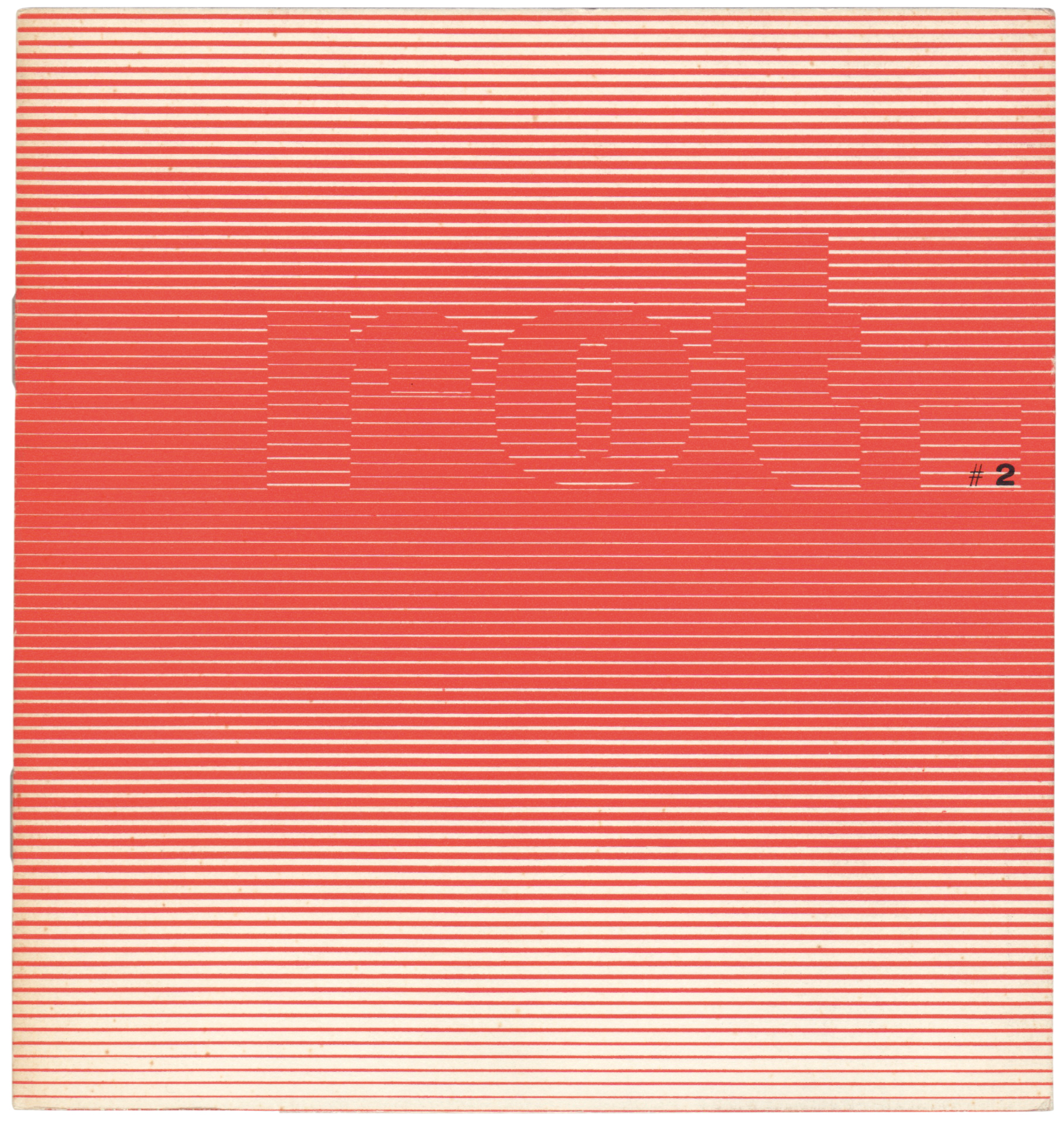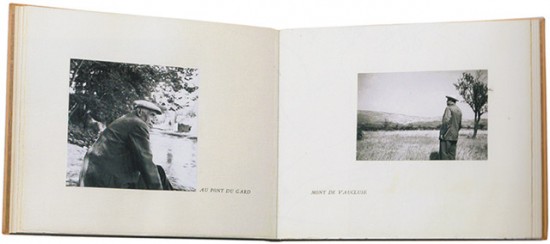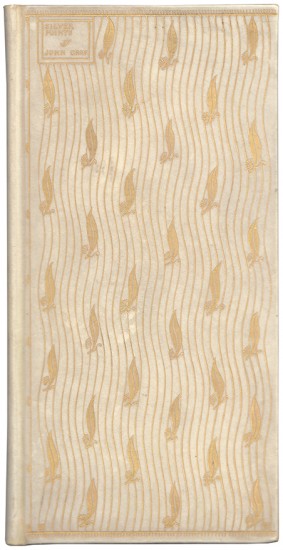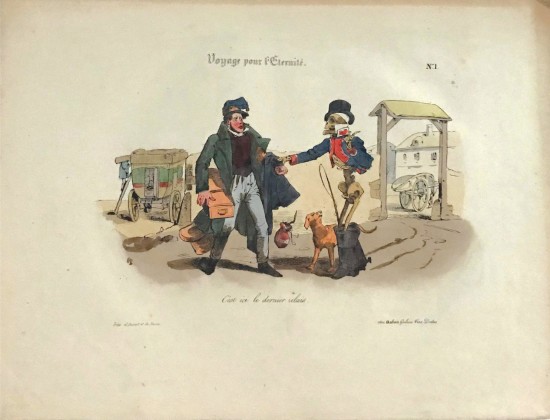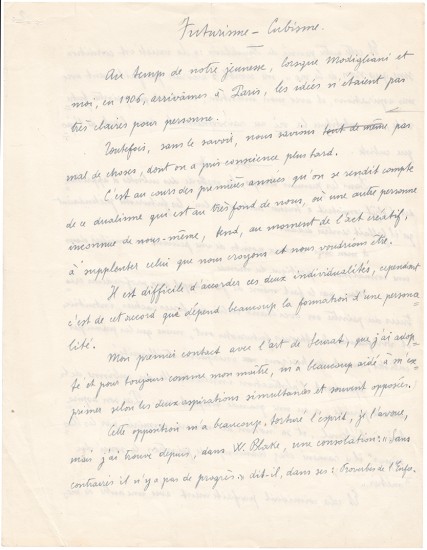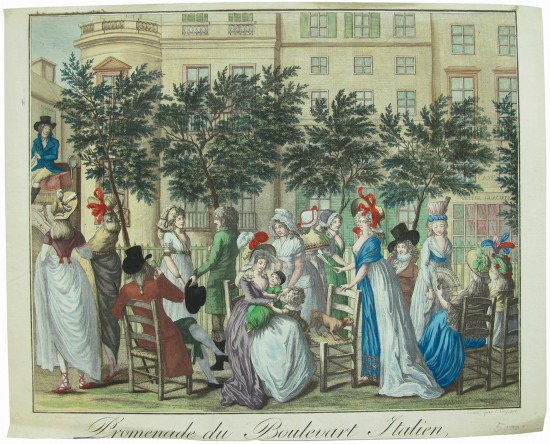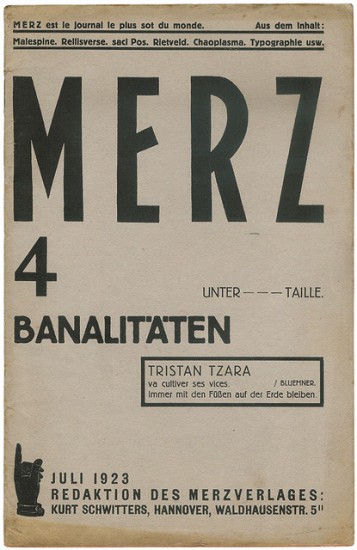rot. Nos. 1 - 62. (All Published)
rot. Bense, Max and Elizabeth Walther, Eds
Stuttgart. Verlag der Augenblick / edition rot. 1960–1976; 1991–1997
Sold
A scarce complete set of the periodical 'rot' founded by Max Bense and Elizabeth Walther to explore the boundaries between science, literature and art.
'Es gibt auch rote Geheimnisse in der Welt, ja, nur rote.' (Ernst Bloch's quotation to the rear cover of each issue).
From the edition limited to 180 - 1,177 copies, with most numbers issued in between 300 - 500 copies.
The philosopher, writer, mathematician, physicist, geologist and lecturer Max Bense (1910 - 1990), founder of the review 'Augenblick', author of the 'Theory of Texts' (1962) and an important proponent of information aesthetics, founded 'rot' in 1960 together with Elizabeth Walther (later, as his partner, Elizabeth Walther-Bense), supremely significant in her own right in the fields of semiotics and aesthetics. Given the shared interests of Bense and Walther, it comes as no surprise to find that 'rot' walks the line between science, literature and art, featuring a stellar list of contributors from the avant-garde in the fields of experimental poetry, painting particularly in terms of the mathematically and computer generated image, visual and concrete poetry, semiotics and linguistic theory and philosophy.
The varied content of 'rot' - lowercase text is de rigueur - and the interests of its founders ensured the treatment of early and important examples of algorithmic and computer art: #8 features the 'erstses manifest der permutationellen kunst', #24 Burckhardt's 'strukturen' and siegfried maser's 'berechnungen', #37 George David Birkhoff's 'einige mathematische elemente der kunst', and #45 - 50 with Carole Spearin McCauley's 'six portraits / wild birds on a winter mountain' etc. Perhaps of most importance however, is #19, which includes Bense's text 'projekte generativer ästhetik' with 'stochastiche graphik' illustrations produced by George Nees' programming. These graphic works appear to be the first examples of 'computer-generated, algorithmic art' and were exhibited at the Studiengalerie of TH Stuttgart, in February, 1965 and Bense's text is, therefore, the manifesto of computer-generated art.
Linguistic experimentation was another area of particular focus and 'rot' is filled with visual and concrete poetry with language itself as art, and most specifically the word as an artistic unit, in and of itself. While many issues include examples of concrete poetry, it is perhaps more important to highlight the relevance of 'rot' as a vehicle for experimental poetry and the wide, international range of its practitioners: from Germany there are contributions by Diter Rot (in the incarnation prior to Dieter Roth), Helmut Heißenbüttel, Ludwig Harig, Reinhard Döhl, Hansjorg Mayer, Friedrike Mayröcker, Franz Mon, Timm Ulrichs, and of course others. Brazil features strongly - one of the scarcest issues with a limitation of 180 copies is #7 'noigrandes konkrete text' devoted to Brazilian concrete poetry- with contributions from Harold de Campos, Décio Pignatari, Augusto de Campos, Ronaldo Azeredo, João Cabral de Melo, Mira Schendel, Aloisio Magalhães et al. Francis Ponge, Jean Genet, Pierre Garnier and Witold Wirpsza were also contributors while #36 features Georg Wilhelm Friedrich Hegel's 'vorlesungen über die ästhetik'.
In the visual poetry field, it must be noted that the following numbers are of particular interest: #7, 'noigrandes konkrete text'; #13 'alphabet' by Hansjörg Mayer; #21 'konkrete poesie international' with numerous contributors; #22 'en gros & en detail' by Konrad B. Schäuffelen; #26 'alphabetenquadrate', again by Hansjörg Mayer; #32 '80 wolken' by Diter Rot; #33 'lesarten und schreibwesen' by Timm Ulrichs (his card 'Je Suis Jesus!' from 'Geiger' #3 is loosely inserted); #40 'poem structures in the looking glass' by Klaus Burkhardt and Reinhard Döhl; #41 'konkrete poesie international 2', again with numerous contributors.
A final mention must be made of the three issues devoted to the subject of Elizabeth Walther's particular interest, the father of modern semiotics, Charles Sanders Peirce: #20 'über zeichen', #44 'graphen und zeichen: prolegomena zu einer apologie des pragmatizismus' and #52 'zur semiotischen grundlegung von logik und mathematik'.
'Chaque numéro est redigé et illustré par un artiste différent.' (see Le Fonds Paul Destribats, pg. 312).
We can trace no complete sets of 'rot' in the UK, Europe or the US.
A complete listing of the issues and their contributors is available on request.
[Das Archiv Sohm, pp. 140 - 141, 143; Le Fonds Paul Destribats 860 (4 issues only); not in Allen].
'Es gibt auch rote Geheimnisse in der Welt, ja, nur rote.' (Ernst Bloch's quotation to the rear cover of each issue).
From the edition limited to 180 - 1,177 copies, with most numbers issued in between 300 - 500 copies.
The philosopher, writer, mathematician, physicist, geologist and lecturer Max Bense (1910 - 1990), founder of the review 'Augenblick', author of the 'Theory of Texts' (1962) and an important proponent of information aesthetics, founded 'rot' in 1960 together with Elizabeth Walther (later, as his partner, Elizabeth Walther-Bense), supremely significant in her own right in the fields of semiotics and aesthetics. Given the shared interests of Bense and Walther, it comes as no surprise to find that 'rot' walks the line between science, literature and art, featuring a stellar list of contributors from the avant-garde in the fields of experimental poetry, painting particularly in terms of the mathematically and computer generated image, visual and concrete poetry, semiotics and linguistic theory and philosophy.
The varied content of 'rot' - lowercase text is de rigueur - and the interests of its founders ensured the treatment of early and important examples of algorithmic and computer art: #8 features the 'erstses manifest der permutationellen kunst', #24 Burckhardt's 'strukturen' and siegfried maser's 'berechnungen', #37 George David Birkhoff's 'einige mathematische elemente der kunst', and #45 - 50 with Carole Spearin McCauley's 'six portraits / wild birds on a winter mountain' etc. Perhaps of most importance however, is #19, which includes Bense's text 'projekte generativer ästhetik' with 'stochastiche graphik' illustrations produced by George Nees' programming. These graphic works appear to be the first examples of 'computer-generated, algorithmic art' and were exhibited at the Studiengalerie of TH Stuttgart, in February, 1965 and Bense's text is, therefore, the manifesto of computer-generated art.
Linguistic experimentation was another area of particular focus and 'rot' is filled with visual and concrete poetry with language itself as art, and most specifically the word as an artistic unit, in and of itself. While many issues include examples of concrete poetry, it is perhaps more important to highlight the relevance of 'rot' as a vehicle for experimental poetry and the wide, international range of its practitioners: from Germany there are contributions by Diter Rot (in the incarnation prior to Dieter Roth), Helmut Heißenbüttel, Ludwig Harig, Reinhard Döhl, Hansjorg Mayer, Friedrike Mayröcker, Franz Mon, Timm Ulrichs, and of course others. Brazil features strongly - one of the scarcest issues with a limitation of 180 copies is #7 'noigrandes konkrete text' devoted to Brazilian concrete poetry- with contributions from Harold de Campos, Décio Pignatari, Augusto de Campos, Ronaldo Azeredo, João Cabral de Melo, Mira Schendel, Aloisio Magalhães et al. Francis Ponge, Jean Genet, Pierre Garnier and Witold Wirpsza were also contributors while #36 features Georg Wilhelm Friedrich Hegel's 'vorlesungen über die ästhetik'.
In the visual poetry field, it must be noted that the following numbers are of particular interest: #7, 'noigrandes konkrete text'; #13 'alphabet' by Hansjörg Mayer; #21 'konkrete poesie international' with numerous contributors; #22 'en gros & en detail' by Konrad B. Schäuffelen; #26 'alphabetenquadrate', again by Hansjörg Mayer; #32 '80 wolken' by Diter Rot; #33 'lesarten und schreibwesen' by Timm Ulrichs (his card 'Je Suis Jesus!' from 'Geiger' #3 is loosely inserted); #40 'poem structures in the looking glass' by Klaus Burkhardt and Reinhard Döhl; #41 'konkrete poesie international 2', again with numerous contributors.
A final mention must be made of the three issues devoted to the subject of Elizabeth Walther's particular interest, the father of modern semiotics, Charles Sanders Peirce: #20 'über zeichen', #44 'graphen und zeichen: prolegomena zu einer apologie des pragmatizismus' and #52 'zur semiotischen grundlegung von logik und mathematik'.
'Chaque numéro est redigé et illustré par un artiste différent.' (see Le Fonds Paul Destribats, pg. 312).
We can trace no complete sets of 'rot' in the UK, Europe or the US.
A complete listing of the issues and their contributors is available on request.
[Das Archiv Sohm, pp. 140 - 141, 143; Le Fonds Paul Destribats 860 (4 issues only); not in Allen].
56 issues. Square 8vo. (Each c.150 x 150 mm). + Single issue. 4to. (280 x 230 mm). Printed text throughout in various languages, monochrome illustrations and reproduction photographs to various issues (the final issue the sole number with colour reproductions), several issues with text in red and black, with visual poems, concrete poems, calligrammes, manipulated text and so on as issued. Original publisher's printed wrappers by Walter Faigle, each issue stapled, perfect bound or in leporello format as issued and with serial variant design and typography in red and white to front covers, issue number in black and white rear cover with red or black quotation by Ernst Bloch.
#44447
